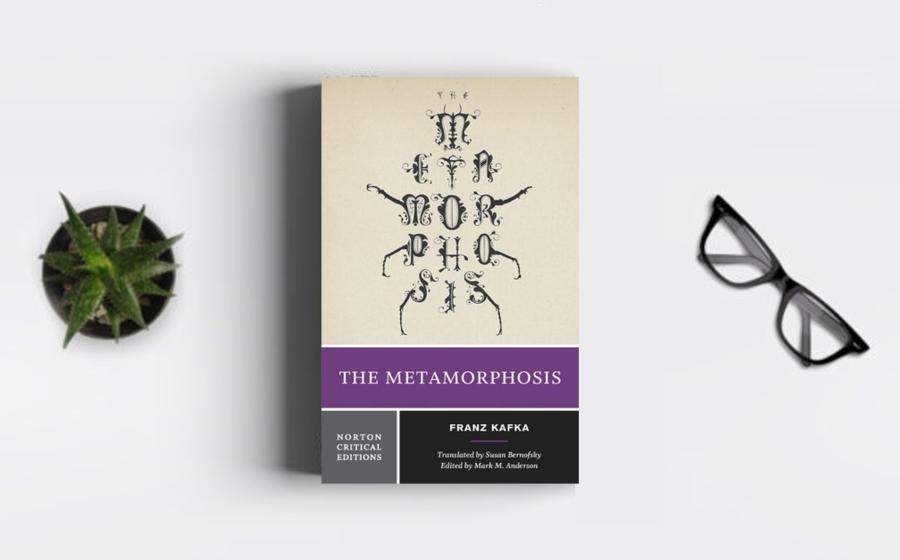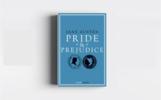"The Metamorphosis" stands as a seminal work in
existential literature, exploring the depths of human
existence and the absurdity of life. Published in 1915,
this novella delves into the surreal and nightmarish
transformation of its protagonist, Gregor Samsa, into a
giant insect. Through this bizarre premise, Kafka weaves
a narrative that transcends its seemingly fantastical
elements to offer profound insights into the human
psyche, alienation, and the futility of societal
expectations. As we navigate the surreal landscape of
Gregor's metamorphosis and its repercussions on his
relationships and sense of self, it becomes evident that
"The Metamorphosis" is not merely a tale of physical
transformation but a powerful exploration of the
existential condition. Its enduring relevance, thematic
richness, and literary innovation firmly establish it as
one of the top books of all time.
"The Metamorphosis" opens with one
of the most iconic and unsettling premises in
literature: Gregor Samsa wakes up one morning to
discover that he has been transformed into a monstrous
insect. Kafka's narrative brilliance lies not only in
the grotesque nature of this metamorphosis but in its
symbolic resonance. Gregor's inexplicable transformation
serves as a metaphor for the absurd and unpredictable
nature of existence.
The absurdity of Gregor's
condition becomes a lens through which Kafka examines
the inherent meaninglessness of life and the existential
angst that accompanies it. The novella invites readers
to grapple with the absurdity of human existence, where
the rational mind is confronted with the irrational and
the expected is replaced by the inexplicable. Kafka's
portrayal of Gregor's metamorphosis becomes a visceral
expression of the human struggle to find meaning in a
world that defies logic and order.
Gregor's physical transformation serves as a
catalyst for his profound alienation from the world,
especially within the confines of his own family. Kafka
portrays Gregor's isolation in the Samsa household with
meticulous detail, highlighting the psychological and
emotional distance that emerges between him and his
family members.
The Samsa family's reaction to
Gregor's transformation reveals the fragility of
familial bonds in the face of the unfamiliar. Gregor's
metamorphosis into an insect transforms him from a
dutiful son and breadwinner into an unrecognizable
creature that elicits fear and repulsion. Kafka explores
the theme of alienation not only through Gregor's
physical metamorphosis but also through the emotional
and psychological estrangement that follows.
Gregor's room becomes a symbolic representation of his
isolation, a space where he can observe but not
participate in the familial dynamics. The novella
prompts readers to reflect on the nature of alienation,
the impact of societal expectations on individual
identity, and the challenges of connecting with others
when one's appearance defies social norms.
Prior to his metamorphosis,
Gregor fulfills the role of the dutiful son and provider
for the Samsa family. His job as a traveling salesman
becomes a central aspect of his identity, emphasizing
the dehumanizing nature of work in a society driven by
economic demands. Kafka explores the theme of alienation
within the context of modern capitalism, where
individuals are reduced to mere cogs in the machinery of
labor.
Gregor's commitment to his job becomes a
source of existential burden, mirroring the
dehumanization inherent in a society that places value
on productivity over individual well-being. The novella
prompts readers to contemplate the impact of societal
expectations on personal identity and the dehumanizing
consequences of a work-centric existence.
The choice of an insect as the central
element of Gregor's transformation carries profound
symbolic weight. Kafka's use of the insect as a metaphor
allows for multiple interpretations, each adding layers
of complexity to the narrative.
The insect
symbolizes Gregor's marginalized and dehumanized state
in the eyes of society. It serves as a visual
manifestation of his alienation and the transformation
from a human being with agency to a creature that is
subject to the whims of others. The insect motif invites
readers to explore themes of identity, societal
expectations, and the arbitrary nature of judgment.
The insect symbolism also aligns with Kafka's
broader exploration of the absurd. The incongruity of an
insect protagonist challenges traditional literary
conventions and norms, forcing readers to confront the
absurdity of Gregor's situation and, by extension, the
absurdity of human existence.
Kafka delves into the internal
landscape of Gregor's mind as he grapples with the
psychological toll of his transformation. Gregor's
consciousness remains human despite his physical
metamorphosis, leading to a profound dissonance between
his self-perception and how others perceive him.
The novella becomes a psychological study of Gregor's
struggle to maintain a sense of identity amid the
dehumanizing effects of his condition. Kafka's
exploration of Gregor's thoughts, desires, and memories
adds a layer of empathy to the narrative, prompting
readers to reflect on the fragile nature of selfhood in
the face of societal judgment.
Gregor's internal
monologue becomes a poignant expression of existential
despair as he contemplates the irreversibility of his
metamorphosis and the subsequent loss of agency. Kafka's
portrayal of Gregor's psychological journey invites
readers to confront the profound implications of
isolation, the fragility of identity, and the human
capacity to endure in the face of existential
challenges.
Grete, Gregor's
sister, undergoes her own transformation in response to
her brother's changed condition. Initially compassionate
and caring, Grete becomes increasingly resentful and
repulsed by Gregor's presence. Her evolving attitude
reflects the shifting family dynamics and the strain
that arises from caring for an individual who defies
societal norms.
Grete's transformation serves as
a microcosm of the broader societal response to the
unfamiliar and the challenges of accepting the other.
Kafka's exploration of Grete's changing attitude adds
layers of complexity to the novella, highlighting the
nuanced ways in which individuals react to the
unfamiliar and the impact of societal expectations on
familial relationships.
One
of the most impactful moments in "The Metamorphosis"
occurs when Gregor is pelted with apples by his father.
The symbolism of the apple becomes a powerful motif
representing Gregor's ultimate demise and the loss of
hope for any meaningful connection with his family.
The apples, initially a source of nourishment,
become projectiles that inflict physical harm on Gregor.
Kafka's use of the apple as a symbol adds a biblical
resonance to the narrative, evoking themes of
temptation, expulsion, and the loss of innocence. The
apple becomes a metaphor for the rejection and
condemnation that Gregor experiences from his family,
signaling the irreversible breakdown of familial bonds.
As the narrative unfolds, it becomes
increasingly apparent that Gregor's fate is sealed. The
sense of fatalism pervades the novella, aligning with
Kafka's characteristic exploration of the absurd and the
inexorable forces that shape human existence.
Kafkaesque fatalism underscores the inevitability of
Gregor's end, emphasizing the futility of resistance
against societal norms and expectations. The novella
prompts readers to confront the deterministic aspects of
the human condition, where individuals are often
powerless in the face of external forces that dictate
their lives.
The Metamorphosis" emerges as an existential masterpiece that transcends its temporal context to become a timeless exploration of the absurdity of the human condition. Through the surreal lens of Gregor Samsa's transformation, Kafka delves into themes of alienation, the dehumanizing nature of work.






